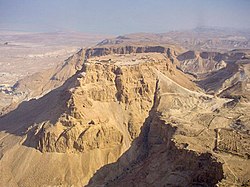This article needs additional citations for verification .(February 2024) |
| Years |
|---|
| Millennium |
| 1st millennium |
| Centuries |
| Decades |
| Years |
| AD 73 by topic |
|---|
| Leaders |
| Categories |
| Gregorian calendar | AD 73 LXXIII |
| Ab urbe condita | 826 |
| Assyrian calendar | 4823 |
| Balinese saka calendar | N/A |
| Bengali calendar | −521 – −520 |
| Berber calendar | 1023 |
| Buddhist calendar | 617 |
| Burmese calendar | −565 |
| Byzantine calendar | 5581–5582 |
| Chinese calendar | 壬申年 (Water Monkey) 2770 or 2563 — to — 癸酉年 (Water Rooster) 2771 or 2564 |
| Coptic calendar | −211 – −210 |
| Discordian calendar | 1239 |
| Ethiopian calendar | 65–66 |
| Hebrew calendar | 3833–3834 |
| Hindu calendars | |
| - Vikram Samvat | 129–130 |
| - Shaka Samvat | N/A |
| - Kali Yuga | 3173–3174 |
| Holocene calendar | 10073 |
| Iranian calendar | 549 BP – 548 BP |
| Islamic calendar | 566 BH – 565 BH |
| Javanese calendar | N/A |
| Julian calendar | AD 73 LXXIII |
| Korean calendar | 2406 |
| Minguo calendar | 1839 before ROC 民前1839年 |
| Nanakshahi calendar | −1395 |
| Seleucid era | 384/385 AG |
| Thai solar calendar | 615–616 |
| Tibetan calendar | ཆུ་ཕོ་སྤྲེ་ལོ་ (male Water-Monkey) 199 or −182 or −954 — to — ཆུ་མོ་བྱ་ལོ་ (female Water-Bird) 200 or −181 or −953 |

AD 73 ( LXXIII ) was a common year starting on Friday of the Julian calendar. At the time, it was known as the Year of the Consulship of Domitian and Messalinus (or, less frequently, year 826 Ab urbe condita ). The denomination AD 73 for this year has been used since the early medieval period, when the Anno Domini calendar era became the prevalent method in Europe for naming years.